Abstract
We have carried out balance studies in normal dogs in order to appraise the effects of chronic hypoxemia on acid—base and electrolyte equilibrium. During the first phase of observation we produced a state of “pure” hypoxemia by reducing the oxygen concentration (utilizing nitrogen as a diluent) and by adding carbon dioxide to the environment in a concentration sufficient to keep arterial CO2 tension (PCO2) within normal limits. The data demonstrate that such a 9-day period of normocapneic hypoxemia has no effect on electrolyte excretion and is virtually without effect on plasma composition.
During the second phase of observation we subjected the hypoxemic dogs to stepwise increments in arterial carbon dioxide tension in order to evaluate the effects of the low oxygen tension on the acid—base adjustments to a chronic state of hypercapnia. At least 6 days was allowed for extracellular composition to reach a new steady state at each level of inspired carbon dioxide. The data demonstrate a rise in both plasma bicarbonate concentration and renal acid excretion that was not significantly different from that which has been described previously for hypercapnia without hypoxemia. Just as in these earlier studies, plasma hydrogen ion concentration rose with each increment in carbon dioxide tension, each millimeter Hg increment in PCO2 leading to an increase in hydrogen ion concentration of 0.32 nmole per L. It thus appears that the chronic“carbon dioxide response curve” is not significantly influenced by moderately severe hypoxemia.
Full text
PDF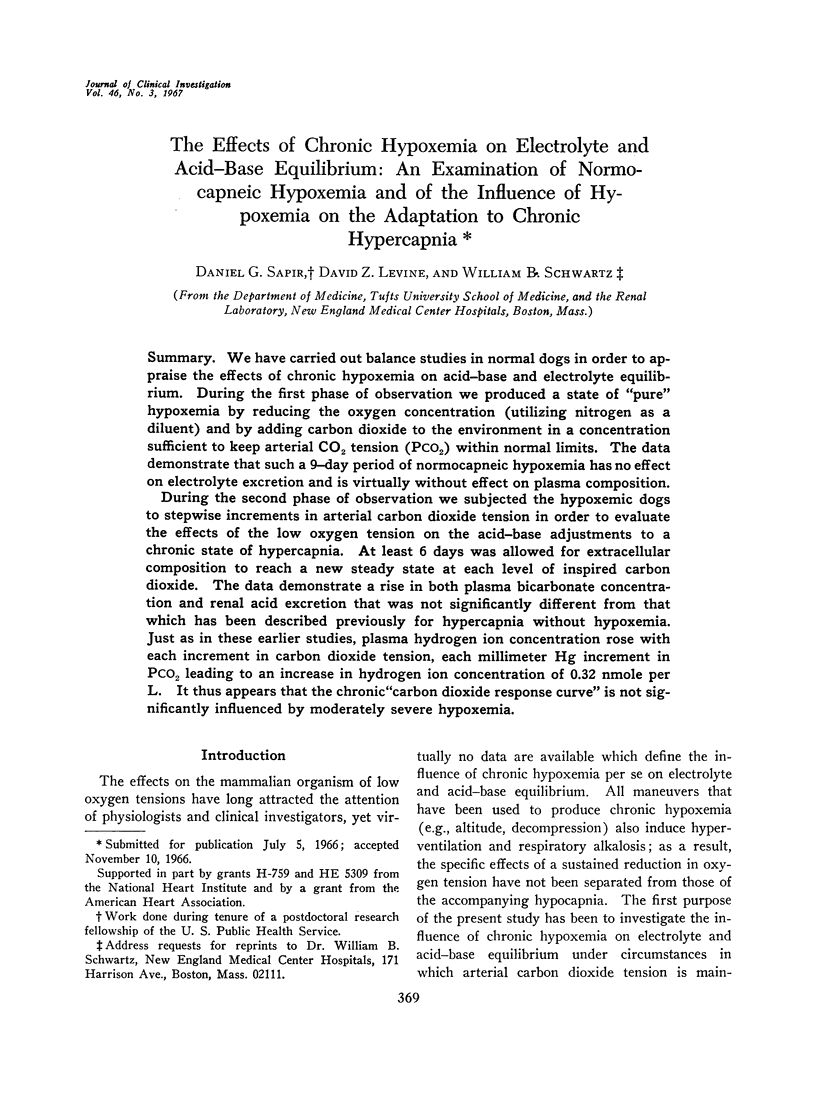
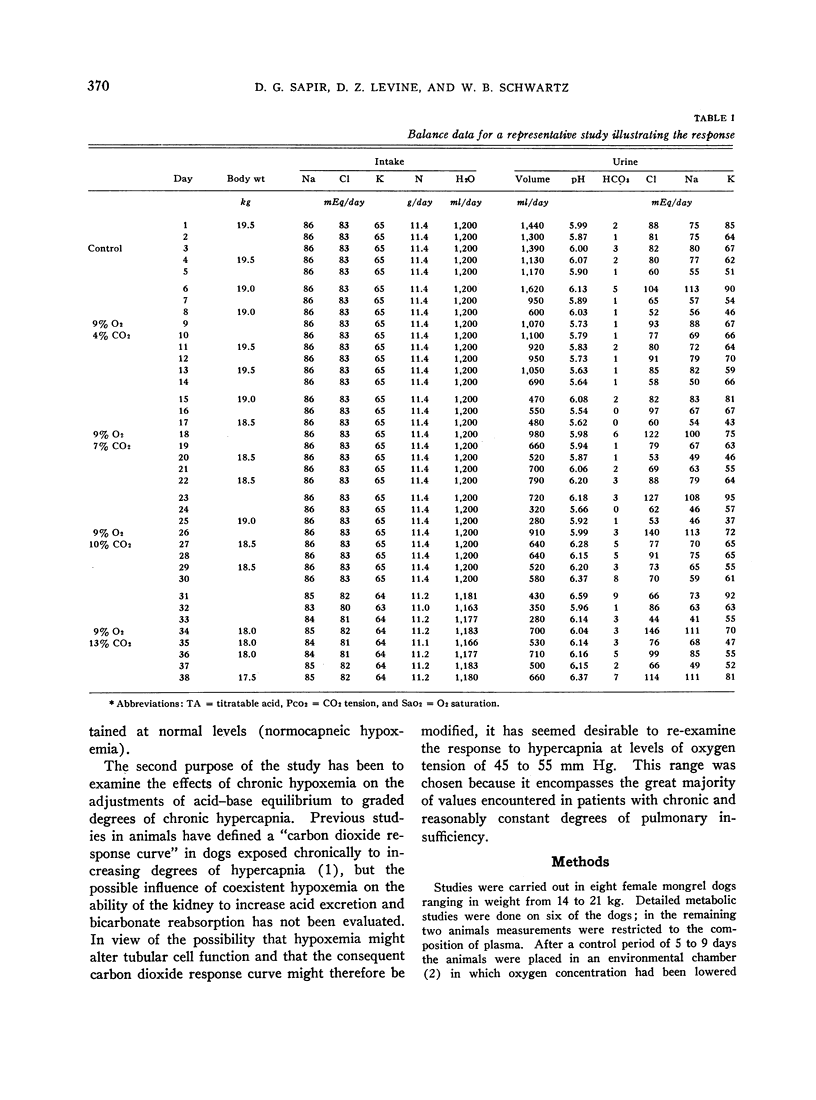
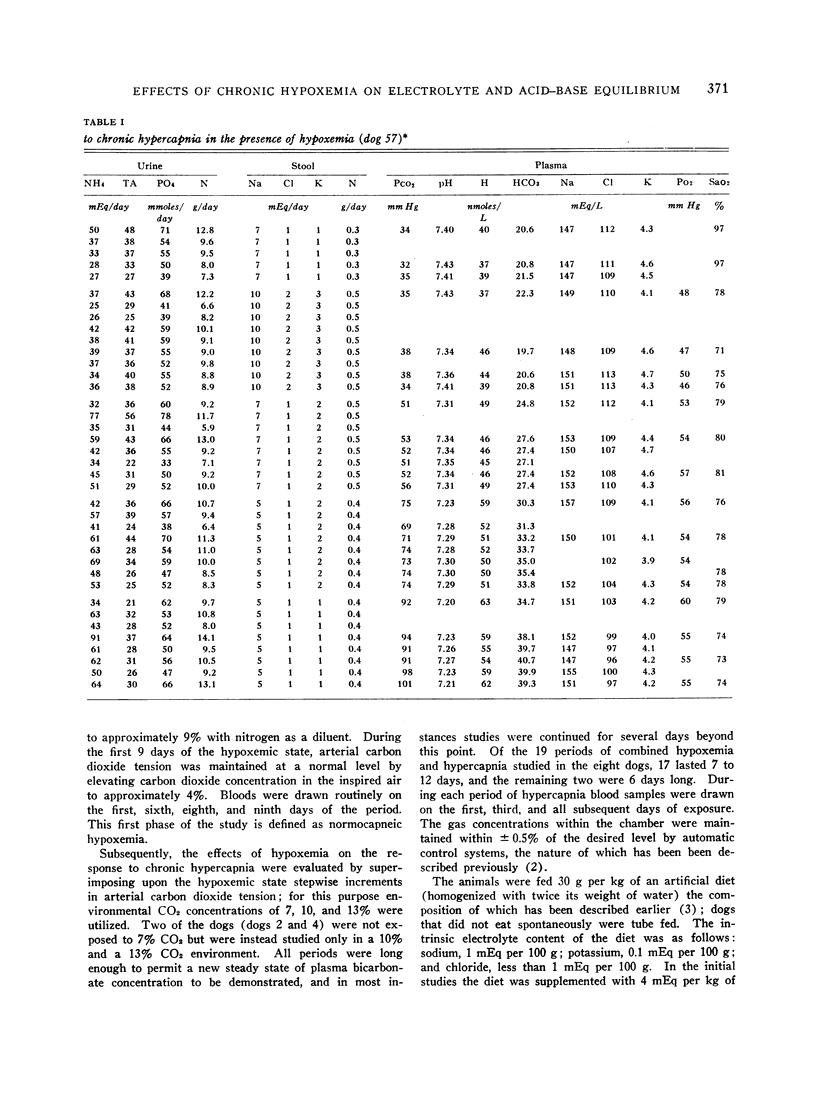
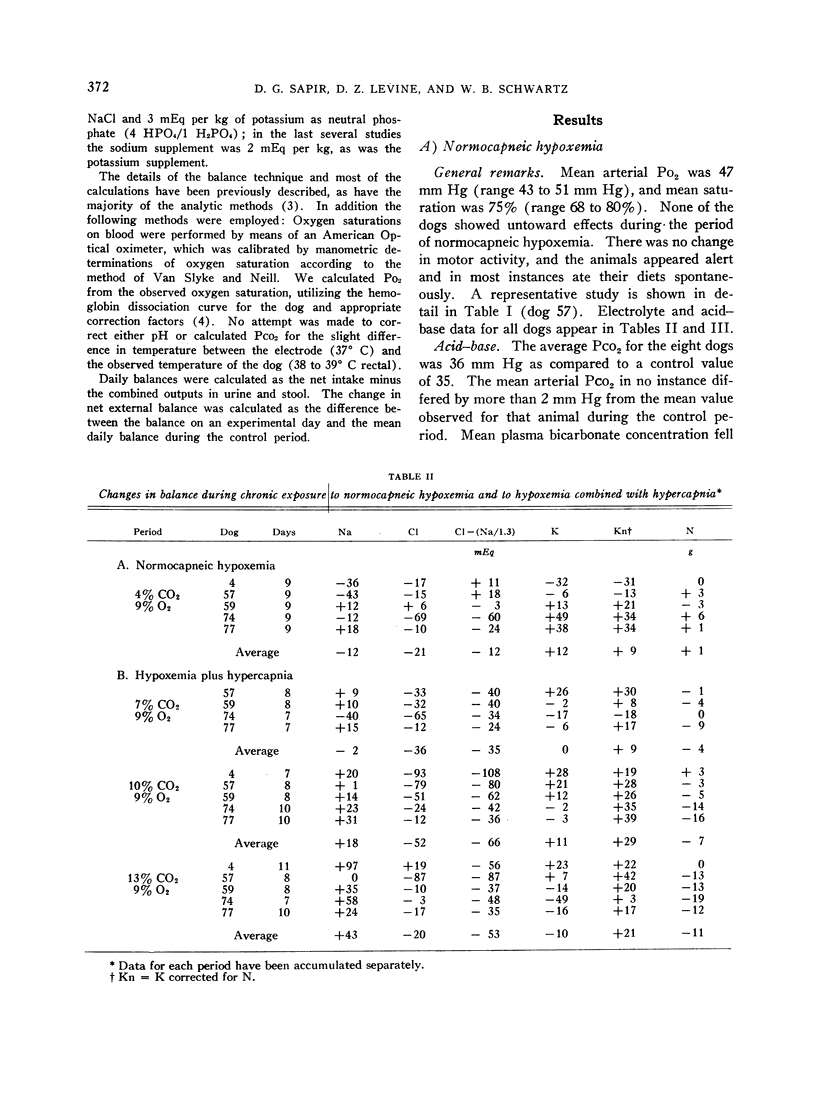
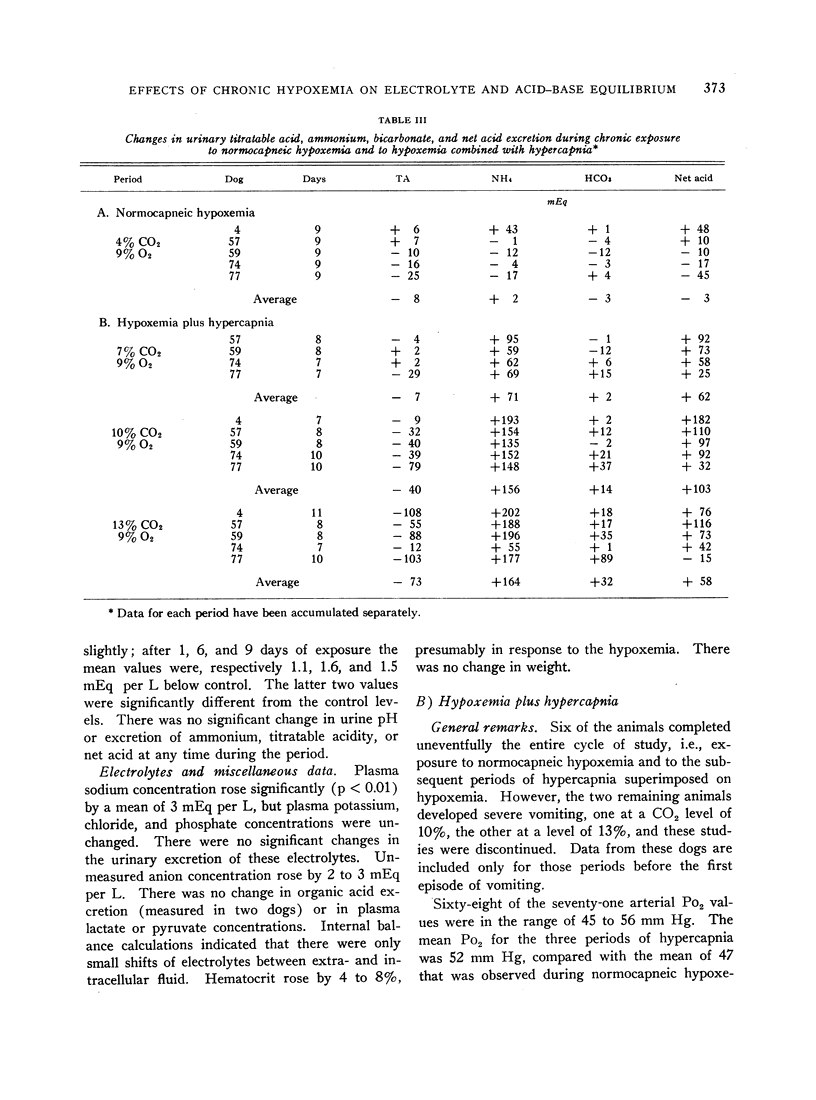
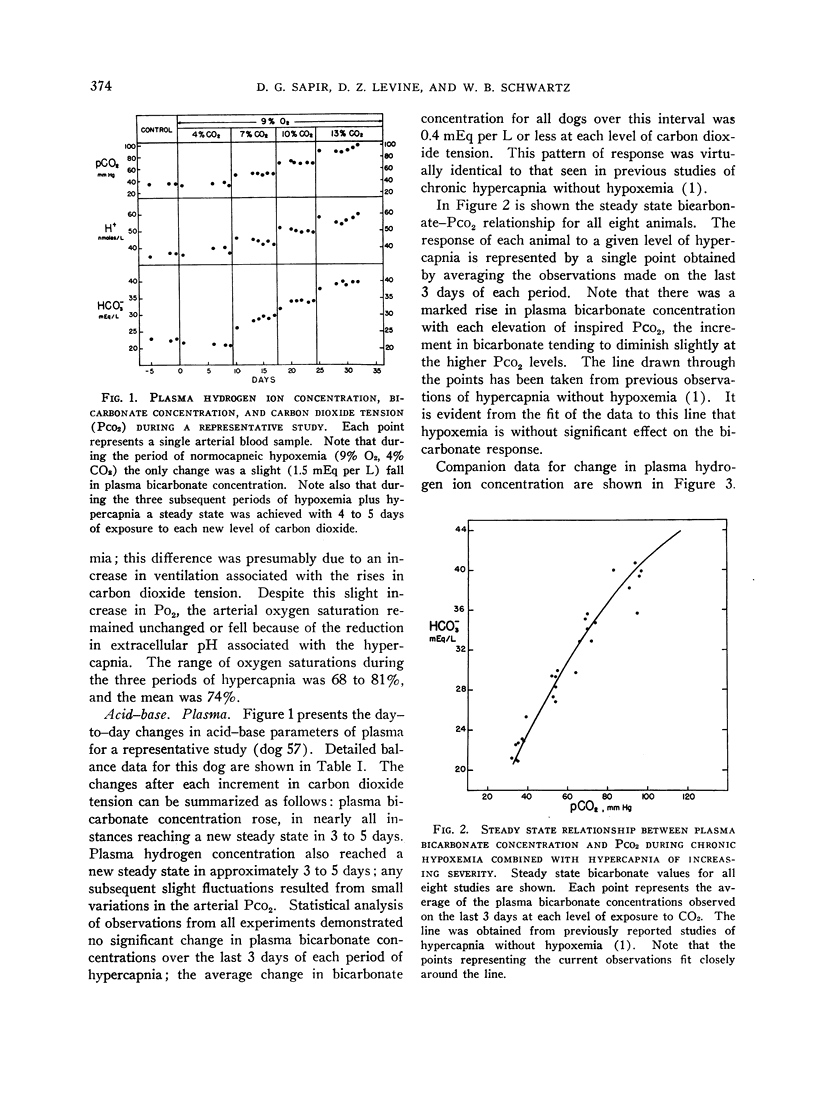
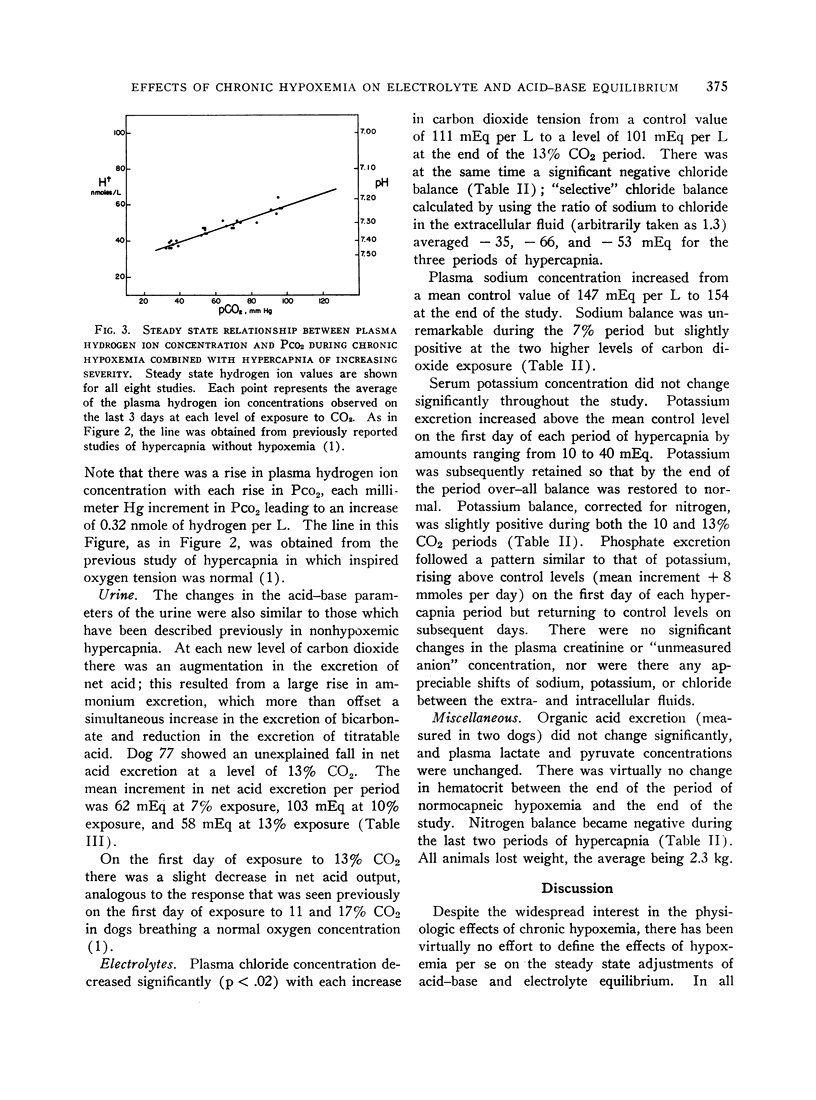
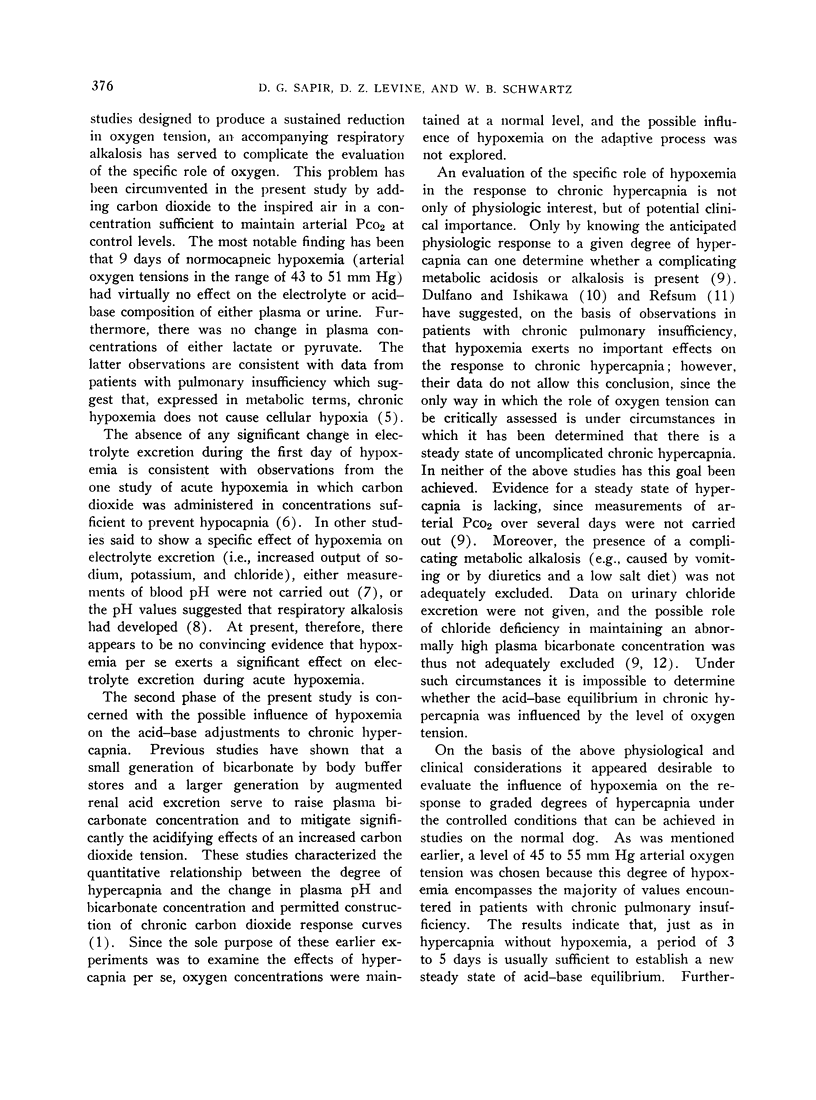
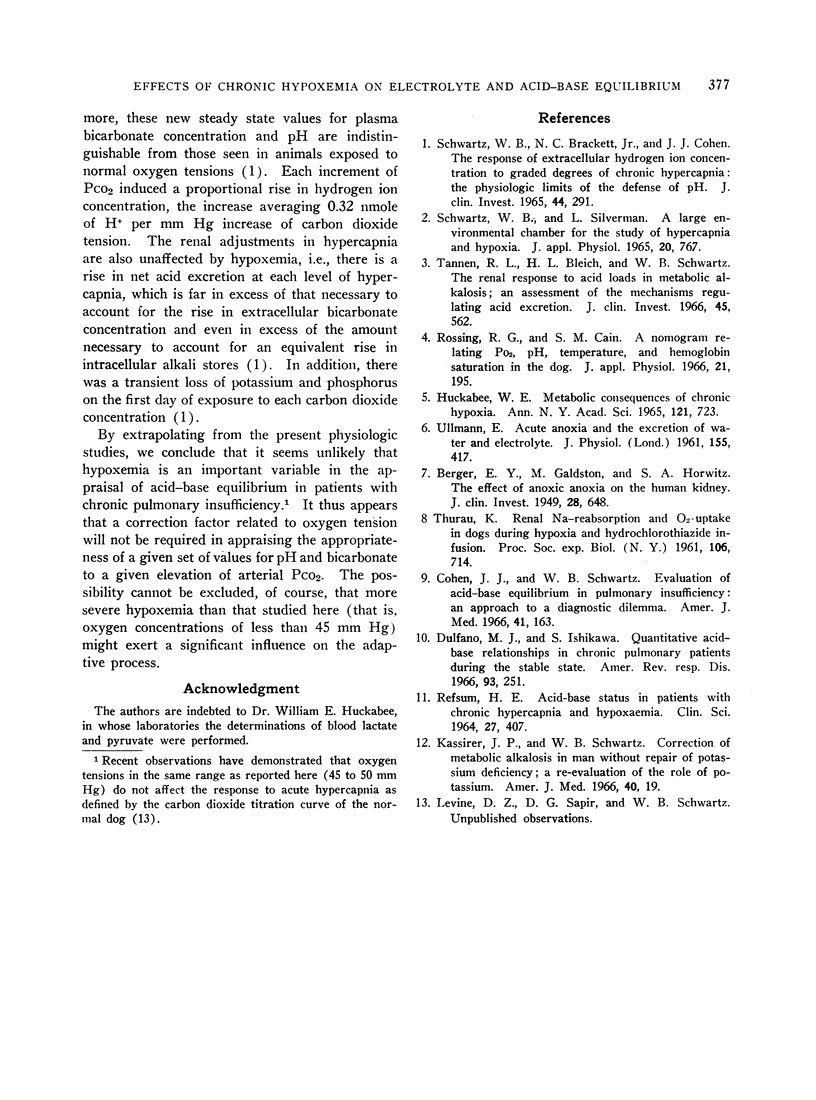
Selected References
These references are in PubMed. This may not be the complete list of references from this article.
- Berger E. Y., Galdston M., Horwitz S. A., Jackenthal R., Pruss M. THE EFFECT OF ANOXIC ANOXIA ON THE HUMAN KIDNEY. J Clin Invest. 1949 Jul;28(4):648–652. doi: 10.1172/JCI102114. [DOI] [PMC free article] [PubMed] [Google Scholar]
- Cohen J. J., Schwartz W. B. Evaluation of acid-base equilibrium in pulmonary insufficiency. An approach to a diagnostic dilemma. Am J Med. 1966 Aug;41(2):163–167. doi: 10.1016/0002-9343(66)90013-1. [DOI] [PubMed] [Google Scholar]
- Dulfano M. J., Ishikawa S. Quantitative acid-base relationships in chronic pulmonary patients during the stable state. Am Rev Respir Dis. 1966 Feb;93(2):251–256. doi: 10.1164/arrd.1966.93.2.251. [DOI] [PubMed] [Google Scholar]
- HUCKABEE W. E. METABOLIC CONSEQUENCES OF CHRONIC HYPOXIA. Ann N Y Acad Sci. 1965 Mar 24;121:723–730. doi: 10.1111/j.1749-6632.1965.tb14240.x. [DOI] [PubMed] [Google Scholar]
- Kassirer J. P., Schwartz W. B. Correction of metabolic alkalosis in man without repair of potassium deficiency. A re-evaluation of the role of potassium. Am J Med. 1966 Jan;40(1):19–26. doi: 10.1016/0002-9343(66)90183-5. [DOI] [PubMed] [Google Scholar]
- REFSUM H. E. ACID-BASE STATUS IN PATIENTS WITH CHRONIC HYPERCAPNIA AND HYPOXAEMIA. Clin Sci. 1964 Dec;27:407–415. [PubMed] [Google Scholar]
- Rossing R. G., Cain S. M. A nomogram relating pO2, pH, temperature, and hemoglobin saturation in the dog. J Appl Physiol. 1966 Jan;21(1):195–201. doi: 10.1152/jappl.1966.21.1.195. [DOI] [PubMed] [Google Scholar]
- SCHWARTZ W. B., BRACKETT N. C., Jr, COHEN J. J. THE RESPONSE OF EXTRACELLULAR HYDROGEN ION CONCENTRATION TO GRADED DEGREES OF CHRONIC HYPERCAPNIA: THE PHYSIOLOGIC LIMITS OF THE DEFENSE OF PH. J Clin Invest. 1965 Feb;44:291–301. doi: 10.1172/JCI105143. [DOI] [PMC free article] [PubMed] [Google Scholar]
- Schwartz W. B., Silverman L. A large environmental chamber for the study of hypercapnia and hypoxia. J Appl Physiol. 1965 Jul;20(4):767–774. doi: 10.1152/jappl.1965.20.4.767. [DOI] [PubMed] [Google Scholar]
- THURAU K. Renal Na-reabsorption and O2-uptake in dogs during hypoxia and hydrochlorothiazide infusion. Proc Soc Exp Biol Med. 1961 Apr;106:714–717. doi: 10.3181/00379727-106-26451. [DOI] [PubMed] [Google Scholar]
- Tannen R. L., Bleich H. L., Schwartz W. B. The renal response to acid loads in metabolic alkalosis; an assessment of the mechanisms regulating acid excretion. J Clin Invest. 1966 Apr;45(4):562–572. doi: 10.1172/JCI105370. [DOI] [PMC free article] [PubMed] [Google Scholar]
- ULLMANN E. Acute anoxia and the excretion of water and electrolyte. J Physiol. 1961 Mar;155:417–437. doi: 10.1113/jphysiol.1961.sp006637. [DOI] [PMC free article] [PubMed] [Google Scholar]


